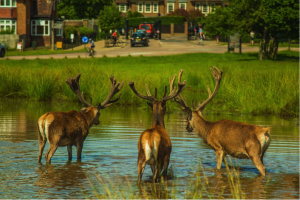How to Take Stunning Wildlife Photos In and Around Ancient Monuments

Photography is a great way of making the most of your time exploring ancient monuments and archeological sites. Many of these sites are tucked away in inaccessible and remote locations, so once you have snapped as many photos of standing stones and Iron Age dwellings as your memory card will hold, you can start looking for the perfect wildlife shot to make your day.
Unless you are a keen photographer, you will probably be using a smartphone or compact camera to take your shots. These are perfectly OK for amateur photographers, so do not feel as if you need to invest in a top-of-the-range DSLR camera. However, if you want to get serious about wildlife photography, check out the best trail cameras guide for useful hints and tips.
Check the Weather Forecast
Wildlife photography tends not to work so well when it is pouring with rain, as most sane creatures go to ground. It is not much fun exploring ancient ruins in the rain, so check the weather forecast before you head out, and if rain is on the cards, consider rearranging your day trip.
Practice Using Your Camera
Try to get as much practice in as you can. Imagine how annoying it would be to have the perfect shot in the frame, but because you don’t know your settings, the final shot is ruined. Read the manual and practice at home until you know your camera settings inside out.
Carry some Binoculars
Binoculars are really useful if you are looking for creatures that are more elusive. Set up in a quiet spot and spend a bit of time looking around for photogenic creatures. Once you have spotted some, you can whip your camera out.
Take a Tripod
Shaky hand syndrome has ruined many a fine shot. A tripod makes like a lot easier, especially if you are photographing a particular area. Pack a lightweight tripod and you can move it around more easily.
Visit Early or Late in the Day
Light is better early or late in the day, as it is more golden. Most cameras struggle to cope when the sun is at its highest, so avoid taking photos around midday. Strong light is better if you want sharp contrasts, but you can still take great photos on a cloudy day if you have a macro lens or a large diffuser.
Be Patient
Wildlife photography requires bags of patience. Most photographers spend hours waiting for the perfect shot, so take a cushion or a folding chair, and bide your time until the local wildlife comes out to play.
Practice!
Unless you are incredibly lucky, your early efforts at wildlife photography are unlikely to be anything other than mediocre. However, don’t lose heart. Keep practicing and posting your best work online for instant feedback.
You don’t need lots of expensive equipment to take amazing photographs of wildlife and ancient monuments. You just need to practice, have a steady hand, and plenty of ideas.

